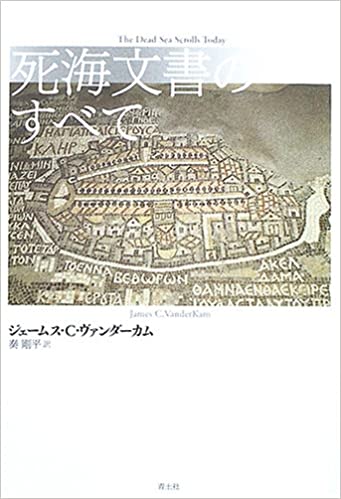死海写本って?
知りませんでした。死海写本って何?
イントロで、何やら古い写本のDNA解析に成功したのね。。。
本文を聞きながら、なるほど、、、どうやら宗教的古文書なのね、、、と。
ご存じの方もそうでない方も、楽しみましょう。
でも気になる。どんなことが書いてあるのでしょう?
- 死海写本の解明にDNAが役立つ
- Dead Sea Scrolls 死海文書、死海写本とは
- 驚き。。。
- 原文 DNA Helps Scholars Understand Dead Sea Scrolls
- Words in This Story
死海写本の解明にDNAが役立つ
DNA Helps Scholars Understand Dead Sea Scrolls
国際的な科学者チームが、死海写本の一部が書かれた動物の皮から古代のDNAを解読することに成功しました。
2000年前の宗教文書の最初のものは、1947年にエルサレムから東に約20キロ離れたクムラン近郊の洞窟で発見されました。その後、科学者たちは、ジュダ砂漠の洞窟やその他の場所で、皮や古代紙に書かれた2万5000枚以上の書物を集めてきました。
テルアビブ大学、イスラエル政府、スウェーデンのウプサラ大学、ニューヨーク市のワイルコーネル医学の専門家は、7年間にわたってDNAテストを実施してきました。彼らは文書に使われた動物の皮の種類を特定したのです。この発見は、専門家が本物の巻物と偽物を見分けるのに役立つでしょう。
多くの専門家は、この巻物はエッセネと呼ばれる小さなユダヤ人グループによって作られたものだと考えています。エッセネ人は、より伝統的なユダヤ教から分離しており、非常に秘密主義的でした。
しかしながら、他の専門家は、異なるグループの複数の人々が死海写本を書いたと主張しています。そのような専門家たちは、死海写本は紛争の時期に安全を保つために集められ、洞窟に入れられたと考えています。
DNA検査の結果、書物に使用された動物の皮は主に砂漠地帯に生息する羊のものであるということが判明しました。しかし、牛の皮の文書もありました。科学者たちによると、このことは、牛の飼育が一般的だったエルサレムのような都市で作成された文書があった可能性を示唆しているといいます。ユダヤ人は約2,500年前、当時ローマに支配されていた都市に主要な宗教施設を建設しました。
研究者のノアム・ミズラヒ氏は、「巻物が作られた生物学的な材料は、テキストの内容と同じように語り、情報を与えてくれます。」と述べました。彼はテルアビブ大学の聖書研究の教授です。
ウプサラのDNA研究所での研究では、エレミヤ書と呼ばれる文書の2つのバージョンが牛皮に書かれていたことがわかりました。科学者たちによると、この発見は、この2つの文書が外部からクムランに持ち込まれたことを示しているといいます。また、異なるバージョンは、ユダヤ人の宗教的な文章に対する理解が異なっていたことを示唆しているともいいます。
ミズラヒ氏は、第二神殿時代のユダヤ人コミュニティは、研究者がかつて考えていたよりも宗教的理解が多様化していたことの表れだと述べています。
科学者のチームは、巻物の非常に小さな断片、塵さえもテストしました。彼らによると、ワシントンの聖書博物館で発見されたような偽の巻物を特定するために、将来的には同じプロセスが使われる可能性があるといいます。博物館職員は2018年に文書が偽物であることを発見した後、文書を撤去しました。
Dead Sea Scrolls 死海文書、死海写本とは
死海文書が書かれたのは紀元前100年以上前。
ということは、新約聖書が成立するよりはるか昔ということになります。
ということは、内容は旧約聖書の範囲といことに。
聖歌や祈りに加えて、知恵や黙示録的な記述、暦に関する内容などが含まれているそうです。
☆詳しく学びたい方必見☟
 出典:Amazon
出典:Amazon
ヴァンダーカム,ジェームス・C.
1946年生まれ。1976年ハーバード大学博士号取得。ノートルダム大学でヘブル語などを講じる。死海文書関係のテクストの編集委員でもある。
イエスの時代を解明する鍵としてセンセーションをまき起こし、近年ようやく全巻公開されたテクストを、精緻に吟味し、その謎に包まれた全貌を犀利にときあかした、定評ある最新の研究。
☆こちらも☟
☆詳しく書かれています☟
死海文書|内容から謎に関して最近発見されたことまでを一挙に紹介! | 世界雑学ノート
驚き。。。
なななんと、売り出されていました!!!
いかがでしょうか?!
原文 DNA Helps Scholars Understand Dead Sea Scrolls
 A fragment from the Dead Sea Scrolls that underwent genetic sampling to shed light on the 2,000-year-old biblical trove is shown to Reuters at the Israel Antiquities Authority (IAA) laboratory in Jerusalem June 2, 2020. (REUTERS/Ronen Zvulun)
A fragment from the Dead Sea Scrolls that underwent genetic sampling to shed light on the 2,000-year-old biblical trove is shown to Reuters at the Israel Antiquities Authority (IAA) laboratory in Jerusalem June 2, 2020. (REUTERS/Ronen Zvulun)
An international team of scientists has successfully decoded ancient DNA from animal skin on which some of the Dead Sea Scrolls were written.
The first of the 2000 year old religious documents were found in 1947 in a cave near Qumran, about 20 kilometers east of Jerusalem. Scientists since have gathered more than 25,000 pieces of writing on skin and ancient paper in the caves and other sites in the Judean Desert.
The University of Tel Aviv, the Israeli government and experts from Uppsala University in Sweden and Weill Cornell Medicine in New York City carried out DNA tests over seven years. They identified the kind of animal skins used for the documents. The finding will help experts to establish real scrolls from fakes.
Many experts believe the scrolls were made by a small Jewish group called the Essenes. The Essenes had separated from the more traditional Jewish religion and were very secretive.
However, other experts argue that several people from different groups wrote the Dead Sea Scrolls. Those experts believe the scrolls were gathered together and put in the cave to keep them safe during a time of conflict.
The DNA tests show that the animal skin used for the writings was mainly from sheep common to the desert area. But, there were also some cow skin documents. The scientists say this suggests some documents may have been created in a city like Jerusalem, where cow raising was more common. Jews built a major religious center in the then Roman-ruled city around 2,500 years ago.
“The biological material of which the scrolls are made, is as telling and as informative as the content of the text,” said researcher Noam Mizrahi. He is a professor of Bible studies at Tel Aviv University.
Study at the DNA laboratory in Uppsala showed the two versions of the document called the Book of Jeremiah were on cow skin. The scientists say the finding shows that these two documents were brought to Qumran from outside. They say the different versions also suggest that the understanding of Jewish religious writings differed.
Mizrahi said the Jewish community during the Second Temple appears to have been more diverse in religious understanding than researchers once thought.
The team of scientists tested extremely small pieces, even dust, of the scrolls. They say the same process could be used in the future to identify fake scrolls, like those found at The Museum of the Bible in Washington. Museum officials removed the documents in 2018, after discovering they were false.
_______________________________________________________________
Words in This Story
decode - v. to figure out an unknown language or system
fake - adj. not real, a copy
text – n. the written words